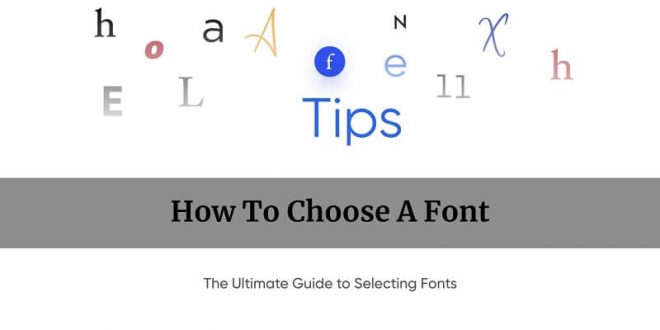Hey guys, in this article, we will discuss how to choose a font – a step-by-step guide. So keep reading.
Choosing a font is not as simple a task as it might seem at first glance. It is even difficult to imagine how many different variations and combinations of lines exist in the world!
Due to such a wide range of choices, sometimes it is very difficult to choose the one that will display the essence of the project as clearly as possible and harmoniously fit into the rest of the visual.
In order to make this task easier and make it as simple and understandable as possible for everyone, we have developed this step-by-step instruction that will give you a little light in this darkness, help you determine the priority fonts, and even choose the one that will impress all your readers! So let’s start our topic of how to choose a font:
Welcome to the diverse and incredible world of typefaces.
Step No.1: Define Your Goal
In order for the font to fit into the visual as harmoniously as possible and correspond to the filling, it is very important to understand initially what the task of your text is. Simply put: define a goal.
You should ask yourself the question, how would you like readers to react to the text? What kind of feedback are you looking for and what do you want to receive in response?
By answering these questions, you will understand what type of fonts should be used in this case. For example, if the task of your text is to make the reader laugh, relax him and bring him pleasure, you should avoid strict and clear lines, conservative fonts, and a “printed” effect.
Try flexible lines, curls, or something softer. If you have a more serious or educational text, what should be avoided in the previous version should be applied in this one. Regardless of your goal, always adhere to two rules: the text must be readable and legible.
Legibility
Many people mistakenly believe that legibility and readability are the same things. But these two concepts are slightly different, now you will understand what exactly.
Legibility is determined by the appearance of the letters separately: the distance between the lines, width, and roundness, and their compatibility next to each other. In turn, readability is determined by other accompanying points: color, letter size, and so on.
Readability
It is the interaction of several aspects: style, size, leading, color, and other properties. The most interesting thing is that not all texts necessarily use readability as an attribute.
It’s up to you to decide: if your text was created to make the reader tense while reading, it is possible to use low readability in the topic. And if you want to simplify complex text as much as possible, then you need this attribute.
Aspects Of Appropriateness
This criterion for evaluating the type shows how much the type is harmoniously combined with the meaning and text, its volume, and its purpose. It is “relevance” that is the word that defines this point and is the main message. Consider the following points when choosing a font:
- Design intent
- Aesthetics
- Mood
- Personal Choice
- Technical Considerations
Step No. 2: Choose A Typeface
1. Plan Your Hierarchy
This point of the plan implies that you can choose several fonts to overlap your tasks: one will be capital, the second is the main one for the text, the third can be used to highlight unique information, the fourth – to underline the main idea, the fifth – for other additions.
2. Consider What Others Have Done Already
It’s never a shame to look at the work of others and borrow a few ideas. Because by passing these moments through yourself, you create completely new and unique content.
A lot of sites and platforms kindly offer you creative fonts, which you can check right now and get some inspiration for your future projects.
3. Experiment The Easy Way
Don’t be afraid to add even the craziest idea and bring it to life. Sometimes, such creative thoughts can become something of a genius.
4. Avoid Anachronisms
Do not use what you are not sure about. If you are in doubt about the meaning or relevance of a font, it is best to leave it.
5. Avoid Trite Correlations
Banality is not welcome in the creative world. So you won’t surprise anyone with the “historical” font in a history textbook.
6. Consider An Extended Type Family
You can take one type of font as a basis and expand it with its various variations. This will be a good solution within the same style.
7. Stick With The Classic Combinations
Classics are always in vogue, this is really verified information. Take it into service: if you’re afraid to experiment, never be afraid to copy the classics.
8. Use A Limited Palette
Don’t oversaturate your text with different fonts and don’t try to add everything at once. Be more discreet and style.
Step No. 3: Break The Rules
This advice may impress you and you may not take it correctly. But! There is one very important clarification: if you want to break the rules, then you should at least know them! This is the main point.
What do we mean by violations? It’s that you can try 100 different ideas and fail, but 101 will be brilliant. This is suitable for those who are willing to take risks. Are you ready? Then go ahead. We believe that you will succeed.
Comments
If you have any questions or comments, you can leave them in this section and we will be happy to establish contact with you.
 Free Web Resources , psd, mockups, & web templates Best WordPress Themes & Best Html Templates
Free Web Resources , psd, mockups, & web templates Best WordPress Themes & Best Html Templates








